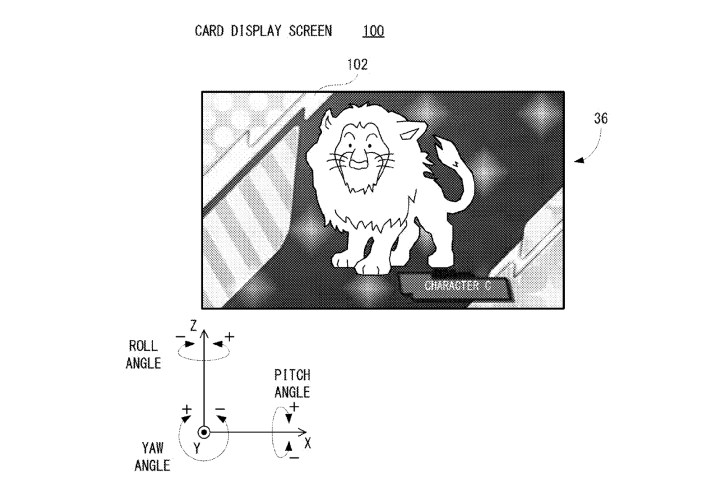
Nintendo has filed a patent application for a digital card format that could make trading card games even more exciting, and corresponding images and details sure make it sound like it will be used for something related to Pokémon.
On Wednesday, April 26, Nintendo submitted its application for a “non-limiting example game apparatus” that includes a “card display screen including an image of a card object” displayed on the apparatus’ screen. The image displayed on the card is a composite made of a background as well as a “color change image” that will differ according to “an attitude of the game apparatus” — this could point to the image changing when a monster is damaged in battle, reflecting their drop in health in real time.
The application added that, depending on where the user is positioned in relation to the card, it can appear to “glitter,” and other elements can also appear on the screen.
“Although detailed description is omitted, in the virtual game space, virtual objects such as plants (including flowers) objects, terrain objects, and building objects are provided and a player character is arranged,” the application said. “Moreover, in the virtual game space, there are also arranged non-player characters such as an enemy character, a villager character, etc.”
Here’s where Nintendo has made it pretty clear the system is designed for Pokémon — the card system can be used to capture “the character of the wild monster by operating the player character and making it a fellow character.”
If this type of card system ever hit store shelves, it would completely change how collectible card games work. Instead of buying booster packs in the hopes of getting a new monster, you will be able to catch them yourself. It’s an idea that sounds remarkably similar to Pokémon Go, though the terminology regarding the “cards” does make it seem that they are two separate products.
This is just one of the innovative patent applications Nintendo has filed recently. Earlier in April, the company filed an application for screens capable of communicating with each other and transferring objects in real time across multiple devices. Turned sideways or on their end, the devices can even display a 3D image.


